The 9/11 Memorial
We explored a day in New York that balanced breathtaking heights with profound remembrance, from the dizzying thrill of The Edge to the solemn stillness of the 9/11 Memorial. This is the story of a day that reminded us just how deeply beauty and sorrow can coexist.

Even the darkest night will end and the sun will rise. – Victor Hugo
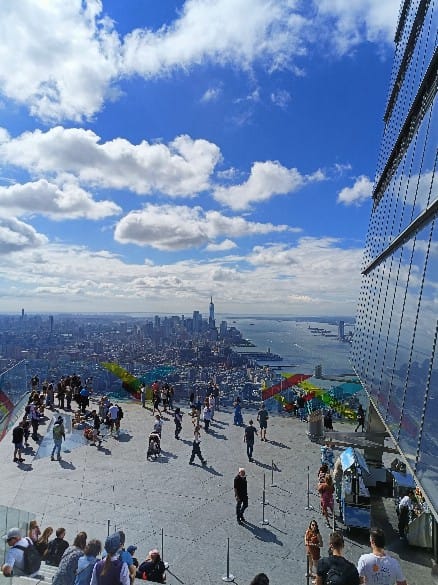
The Edge
Our day began with a breathtaking view from The Edge, the highest sky deck in the Western Hemisphere. As we stepped onto the glass floor, the city stretched endlessly beneath us—Manhattan’s skyline gleaming in the morning light. From here, we could see far beyond New York, with New Jersey on one side and Long Island on the other. The wind rushed around us, adding to the thrill. But having visited several observation decks already, we soaked in the panoramic sights, snapped a few photos, and moved on.
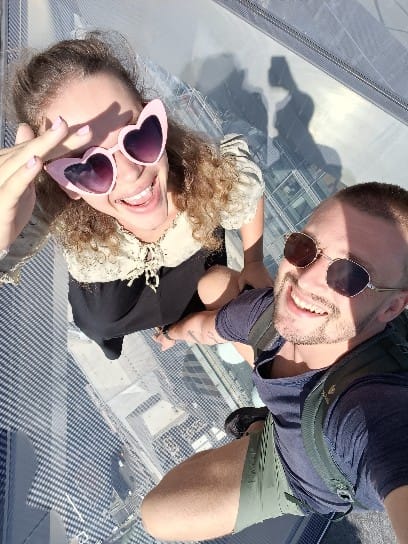
After grabbing a classic New York bagel for lunch, we made our way to the 9/11 Memorial and Museum, located at the World Trade Center site in Lower Manhattan. Meeting up with our guide and a small group of fellow visitors, we prepared ourselves for an experience unlike any other—a space designed not only for to remember the nearly 3,000 people who lost their lives on September 11, but for reflection, and recognition of the resilience of those affected by the tragic events.
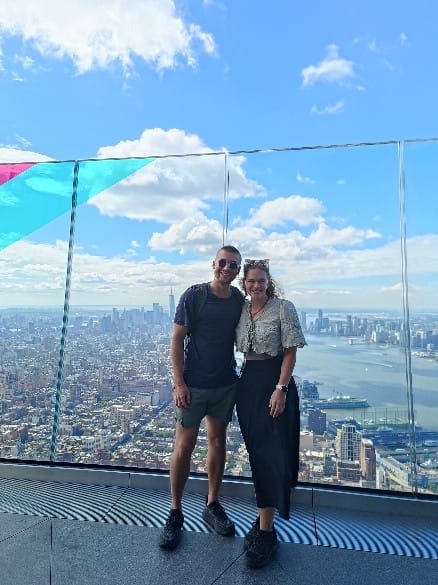
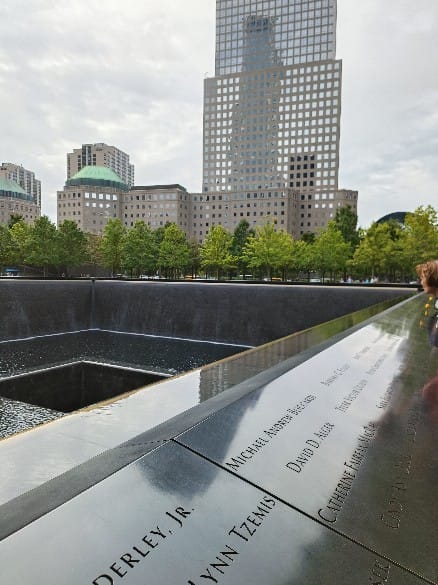
9/11 Memorial
The first thing that caught my eye was the pair of enormous reflecting pools, placed where the Twin Towers once stood. Water cascaded continuously down their sides into a seemingly endless void, a powerful representation of both loss and memory. The sound of the falling water created a hushed, meditative atmosphere, isolating us from the city's noise and drawing us into the space's gravity. It was impossible not to feel the weight of what had been lost. The waterfalls are designed to evoke a sense of loss and absence, as the void represents the physical and emotional emptiness left by the events of 9/11. The cascading water gives a sense of the passage of time and the ongoing mourning process, as well as the idea that the wounds of 9/11 are slowly healing over time.
Around the pools, the names of the nearly 3,000 victims were inscribed in bronze, in a way that preserved personal connections—co-workers, family members, friends, and even those who had been seated together on flights. The arrangement made the memorial feel deeply human, a reminder that behind each name was a life, a story, and loved ones left behind.
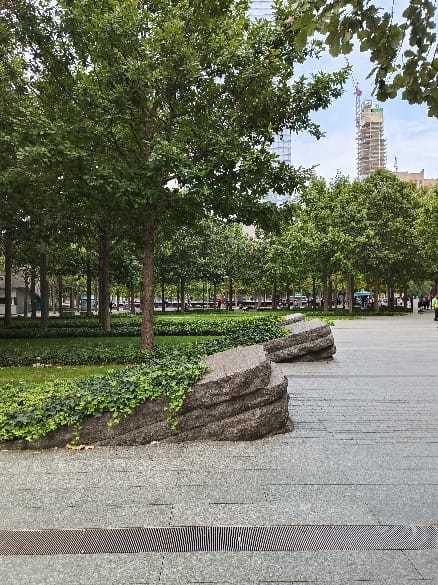
Beyond the pools, rows of white oak trees stood tall and silent. Over 400 of them filled the Memorial Plaza, their presence a symbol of resilience and regrowth. With every passing year that the trees grow, they literally lift the place a little higher. Our guide pointed out the significance of the trees—their placement representing the gradual renewal of a city that once lay in ruins. Beneath them, small bushes resembled the scattered debris that had once covered this ground, a haunting but subtle nod to the devastation of that day.
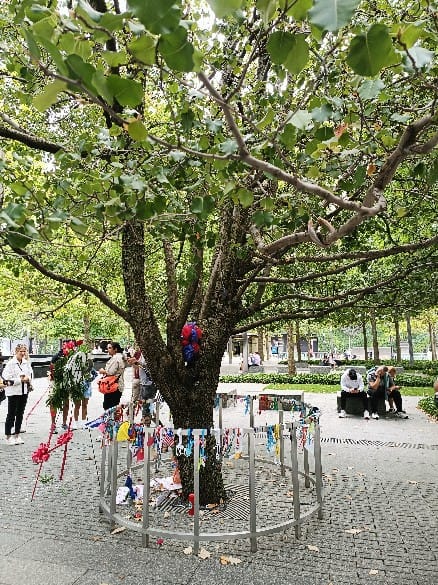
Then we reached the Survivor Tree, a single Callery pear tree that had somehow survived the destruction. Pulled from the wreckage, it had been nursed back to health and replanted here, now thriving against all odds. Seeing its branches stretching toward the sky, covered in fresh blossoms, was a moment of quiet power. This tree, scarred yet alive, embodied everything the memorial stood for—loss, but also resilience; tragedy, but also hope. The tree represents the ability to recover from even the most catastrophic of events. Every year, the tree blossoms, and its flowers are viewed as a sign of life continuing after such profound loss.
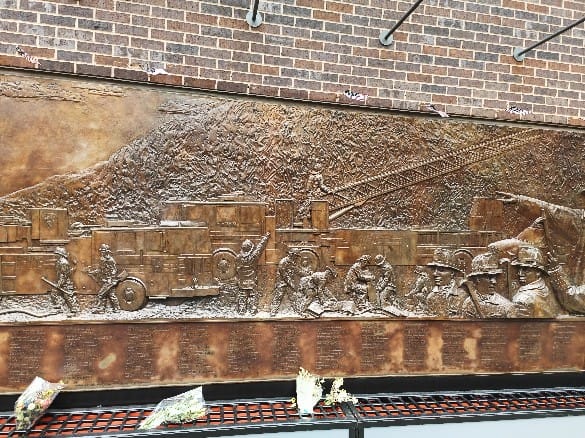
Walking through the site, I couldn’t help but admire how well thought out the whole design is. How masterfully the memorial balanced mourning with renewal. It was a place of sorrow, but also of strength. A testament to the human ability to rebuild, even after unimaginable loss.
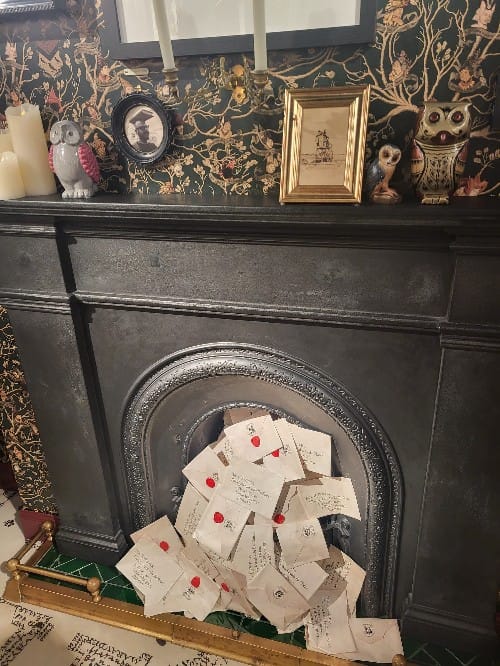
A Spark of Magic
After the tour, we didn’t speak much at first. The emotions of the visit lingered, and we needed time to process it all. So we wandered. We strolled through Wall Street, where the hum of city life continued, a stark contrast to the quiet reverence of the memorial. Eventually, we found ourselves in front of the Harry Potter Store, where I caved and bought an overpriced butterbeer—because sometimes, even after a heavy day, a little magic helps.
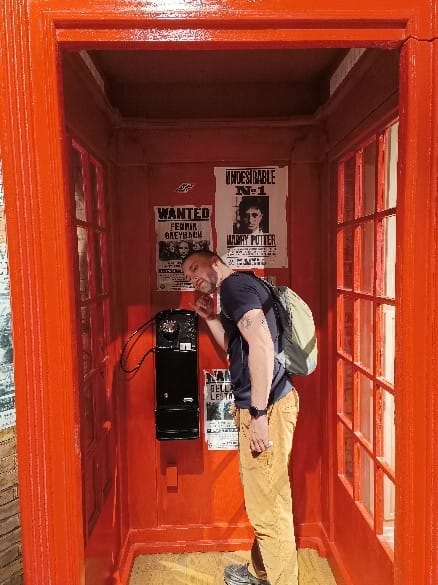
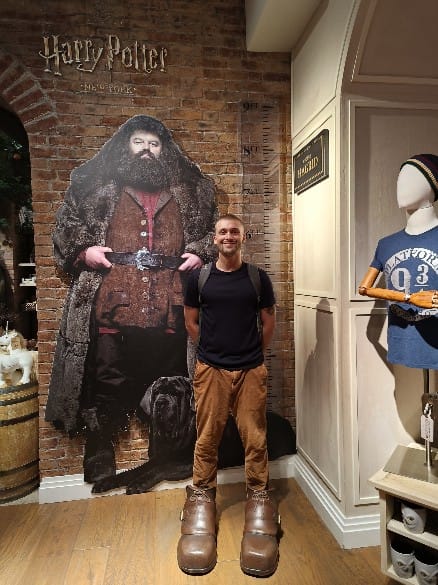
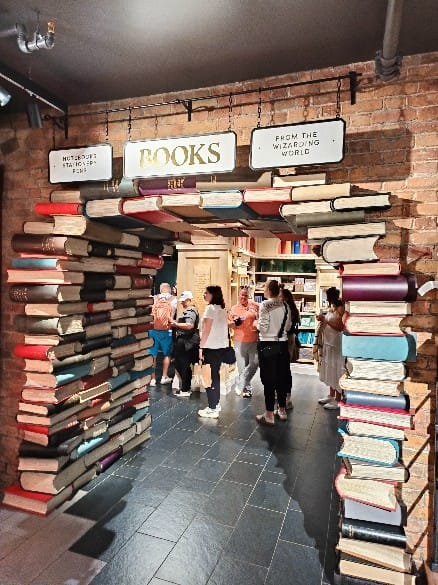
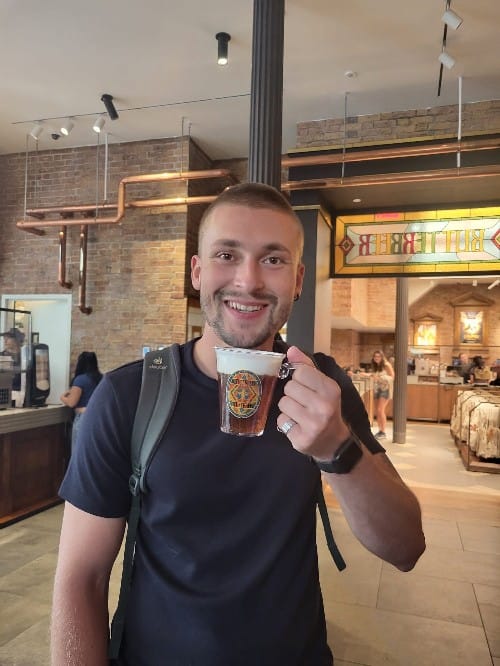
As the sun began to set, we slowly made our way back toward the Upper East Side. We stopped at a café, sipping coffee and watching people pass by—locals rushing home, tourists taking in the sights, the rhythm of the city moving forward, as it always does.
Before heading back to the apartment, we made one last stop for famous chocolate chip cookies, a sweet ending to a day filled with both gravity and wonder.